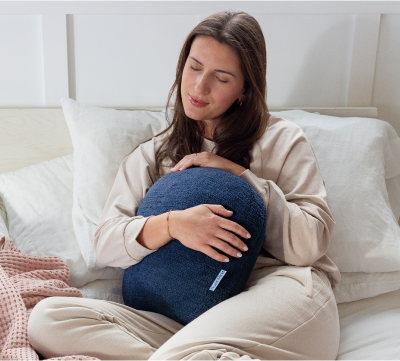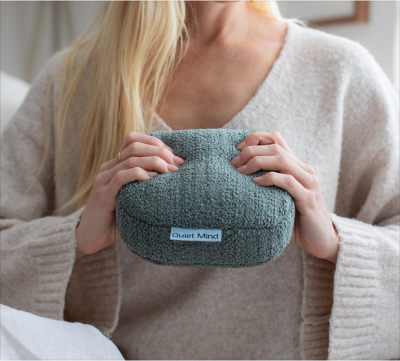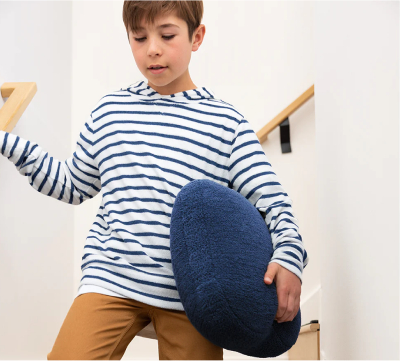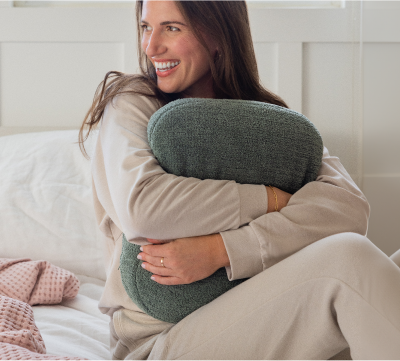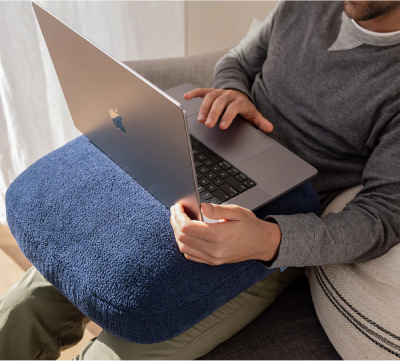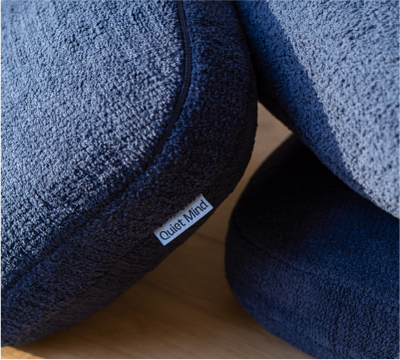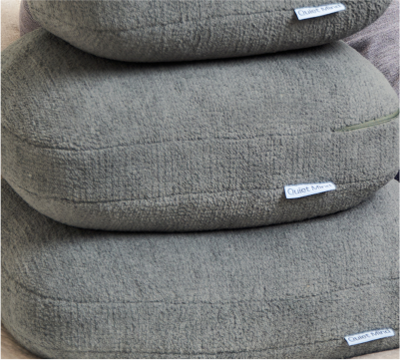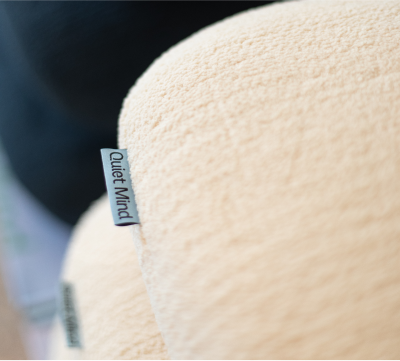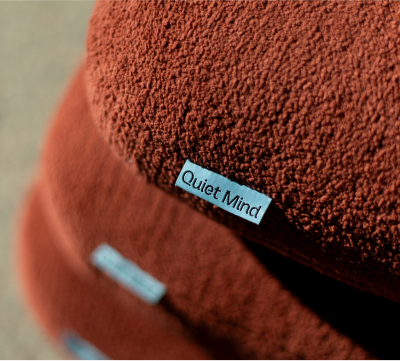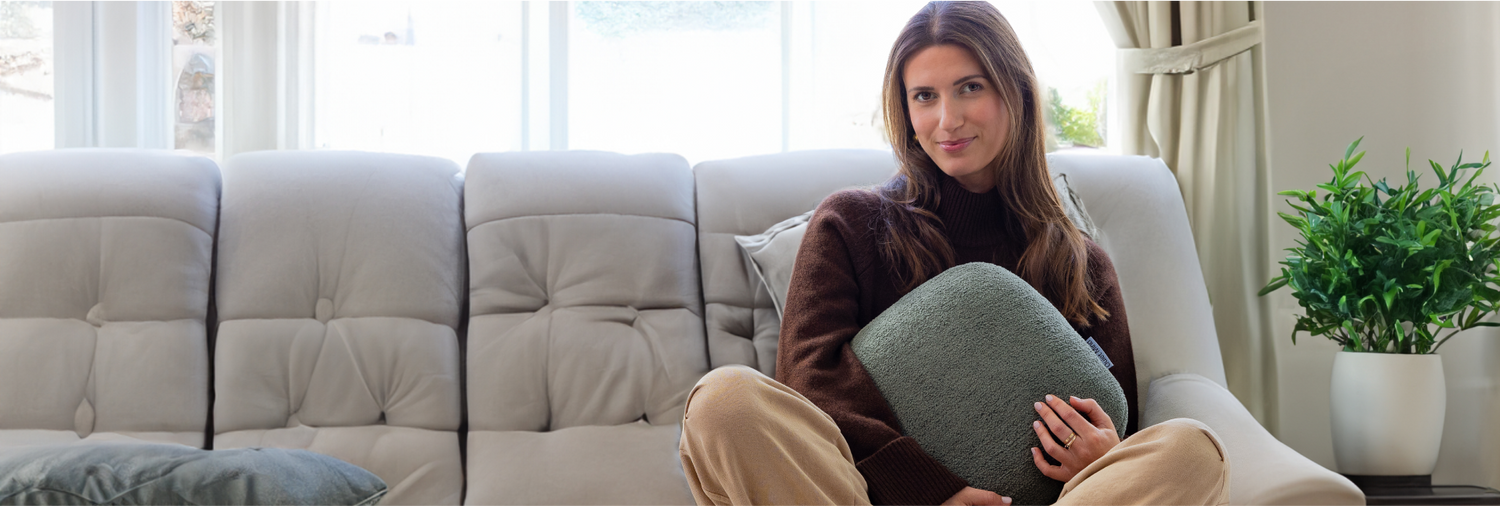Struggling with stomach pain? The position you lie in can play a surprising role in how quickly you find relief.
Whether it’s bloating, cramps, or indigestion, certain resting postures can ease pressure on your abdominal organs and help your body process discomfort more gently.
In this guide, we’ll break down the best sleeping and resting positions for soothing stomach pain and promoting better digestion — so you can rest, recover, and feel better faster.
Why Your Sleeping Position Affects Stomach Pain
Your body's position while sleeping affects digestion. Simple changes in how you lie can help or hurt stomach issues like indigestion. If you're struggling with sleep in general, exploring better sleep habits can further improve your rest and digestion. Let's explore why gravity, digestion, and posture are important.
How Gravity, Digestion, and Body Alignment Play a Role
Gravity helps move food through your digestive system. When you lie flat, stomach acid might move up. Proper alignment reduces pressure on organs. Here's how each factor works together:
- Gravity: Sleeping on your left-side lets gravity help digestion, moving food into the intestines naturally.
- Digestion: Lying on your right side may slow stomach emptying, trapping gas or acid.
- Alignment: Twisted postures can compress the abdomen, disrupting organ function.
Common Causes of Stomach Pain While Resting
Some positions can cause pain by disrupting natural processes. Below are key issues linked to specific sleeping positions for indigestion:
|
Position |
Cause |
Impact |
|
Right-Side Sleeping |
Slows gastric emptying |
Traps gas, causing bloating |
|
Flat on Back with Raised Legs |
Alters acid distribution |
Potential heartburn |
|
Fetal Position (too tight) |
Stomach compression |
Aggravates cramps |
Paying attention to these factors helps you choose the best sleeping positions for indigestion that reduce nighttime discomfort.
Left Side vs Right Side: Which Side Helps With Digestion?
Choosing the right side to sleep on can ease stomach pain. Your body's rest processes can either help or hurt. Let's look at how sleeping on one side affects digestion and comfort.
Why Lying on Your Left Side Can Ease Stomach Hurt
Optimal left-side sleeping supports digestion. Here's how it works:
- Gravity aids movement: This position helps waste move smoothly from the stomach to the intestines, reducing bloating.
- Less acid reflux risk: Lying on your left keeps your stomach below your esophagus, preventing heartburn.
- Organ support: This position is believed to reduce pressure on abdominal organs, potentially easing post-meal discomfort.
When to Avoid Right Side Sleeping
Sleeping on your right can sometimes worsen symptoms. Avoid this position if you experience:
- Indigestion: This position may slow digestion, trapping gas and slowing nutrient absorption.
- Acid reflux: Your stomach’s position on the left means lying on your right can push stomach acid upward.
- Bloating: Gravity here works against natural waste flow, leading to discomfort.
The Fetal Position: Curling Up to Ease the Pain
Many people find that curling into a fetal position can offer gentle relief during digestive discomfort. This posture naturally eases tension in your belly. It's a simple way to find relief.
The fetal position benefits often include less pressure on sensitive areas. It also lets your body relax.
How Curling Your Body Can Reduce Cramping
Bending your knees toward your chest eases strain on your stomach muscles and organs. This curled shape may reduce abdominal tension and help ease cramping.
For many people, hugging a pillow while sleeping also provides emotional comfort and a sense of security during episodes of stomach discomfort.
Gravity helps with this position, easing gas movement. It's a popular choice for bloating or menstrual pain.
Modifying the Fetal Position for Different Types of Pain
Adjust the fetal position to target specific discomforts:
- For gas or bloating, place a pillow under bent knees to deepen the abdominal stretch.
- Menstrual cramps may respond to a small pillow between the legs for lower back and spine support.
- Side-specific pain? Try tilting slightly toward the less painful side while keeping knees drawn up.
Small tweaks can maximize fetal position benefits. Always ensure comfort remains your priority—stop if the adjustment causes new discomfort.
Lying Flat on Your Back: Good or Bad for Stomach Pain?
Lying flat on your back can help with back sleeping and pain relief. But, it's not good for everyone. It depends on why you're in pain. Here's how to figure out if it's right for you:
When Back Sleeping Helps vs When It Hurts
- May help with acid reflux or GERD symptoms by positioning the stomach below the esophagus.
- Helps with: Mild bloating by allowing abdominal muscles to relax naturally.
- May worsen: Sharp cramps from menstrual pain or intestinal issues due to lack of pressure relief.
- May worsen: Severe gas buildup if lying flat restricts natural gas movement.
Elevating Your Head or Legs — Does It Help?
Small changes can make a big difference in pain relief:
|
Modification |
Use Case |
How It Works |
|
Head raised 4-6 inches |
Heartburn |
Blocks acid flow into the throat |
|
Legs elevated 10-15 degrees |
Bloating |
Promotes blood flow to reduce swelling |
|
Head + knees slightly raised |
Post-meal discomfort |
Encourages digestion without pressure |
Experiment with pillows to see if these positions ease your discomfort. If the pain continues, it’s a good idea to check in with your doctor for guidance.
Should You Lay on Your Stomach With a Belly Ache?
Deciding to sleep on your stomach with a stomach ache is a big choice. It's not always the best option, but understanding the pros and cons of sleeping on your stomach can help you decide.
The Pros and Cons of Prone Sleeping
Some people find it helps because it puts less pressure on their stomach. It might also relax the back muscles, giving some relief. But, there are big downsides.
Lying on your stomach can make stomach pain worse by pressing on it. It can also hurt your neck and lower back if you don't support them right.
- Pros: Potential back muscle relaxation, minimal torso compression for certain pain types
- Cons: Increased abdominal pressure, risk of spinal misalignment, limited breath support
How to Make This Position More Comfortable if You Must
If you still want to sleep on your stomach, here are some tips to make it better:
- Place a thin pillow under your hips to lift the pelvis slightly
- Use a flat pillow under your abdomen to gently distribute pressure
- Avoid burying your face into the mattress—turn your head to one side
- Limit time spent in this position to short intervals
Always put your comfort first and listen to your body. If the pain gets worse, try safer positions like lying on your side or the knees-to-chest pose.
Best Resting Positions for Gas, Bloating & Indigestion
Certain body positions can provide quick relief from gas, bloating, and digestive discomfort. They help ease abdominal pressure and encourage smoother digestion. Try the options below the next time your stomach feels unsettled.
Knees-to-Chest (Wind-Relieving Pose) for Quick Relief
One of the simplest and most effective positions for relieving stomach discomfort is the Knees-to-Chest pose, often used in yoga for its digestive benefits. Start by lying on your back and pulling your knees towards your chest. Hold for 30 seconds to a minute. This stretch loosens tight muscles and helps gas move.
- Place hands around shins for stability
- Breathe deeply while holding the stretch
- Works best for sudden cramps or trapped air
- Reclined Seated Positions After Eating
Sitting with your back elevated after meals can help prevent bloating. Use pillows to support your back. Keep your feet flat on the floor to avoid slouching.
- Sit in a chair or on a couch with back support
- Legs slightly elevated to reduce pressure on the abdomen
- Maintain this position for 20–30 minutes post-meal
|
Position |
Key Benefits |
Best Time to Use |
|
Knees-to-Chest |
Stretches abdominal organs, stimulates gas release |
During acute discomfort or cramps |
|
Reclined Seated |
Encourages upright digestion, reduces acid buildup |
After meals or when sitting for long periods |
These positions may offer natural relief and can be explored as part of your routine for managing occasional digestive discomfort.
For added calming support, some people use weighted pillows during these positions to support relaxation and body awareness. The gentle pressure from the pillow can create a sense of grounding, helping the body feel more secure and settled.
This not only encourages relaxation but also increases body awareness—making it easier to release tension and drift into rest.
Pairing these positions with a mindful bedtime routine can help improve your overall rest. Here are especially when supported by natural strategies to sleep better at night.
When to Avoid Lying Down Completely
Knowing when to avoid lying down is crucial for managing stomach pain safely. Some situations require staying upright to avoid making symptoms worse or to prevent complications.
How Long to Wait Before Lying Down After a Meal
Don't lie down right after eating. Wait at least two to three hours to let your food digest. Lying down too soon can slow digestion, trap gas, or make heartburn worse.
Staying upright after eating may assist the body’s natural digestive process.
Signs Your Pain Needs Medical Attention
If your pain gets severe, lasts a long time, or comes with fever, vomiting, or blood in your vomit or stool, get help fast. Severe abdominal pain that lasts more than 12 hours or trouble breathing are big warning signs.
Ignoring these signs could delay getting the right treatment. This is especially true for serious conditions like appendicitis or gallstones.
About Quiet Mind
At Quiet Mind, we believe in the power of simple, natural solutions to ease the mind and body. Our signature weighted pillows are designed to provide comforting pressure, helping to alleviate stress, anxiety, and restlessness.
Whether you're seeking a moment of calm during a hectic day or a more restful night's sleep, Quiet Mind offers tools to support your journey toward tranquility. Discover the soothing embrace of our weighted pillows and find your path to a quieter mind.
FAQ
What are the best sleeping positions to relieve stomach pain?
Lying on your left side or in a fetal position can help with stomach pain. These positions may improve digestion and reduce discomfort. Avoid lying flat on your back or stomach, as it depends on your pain's cause.
How does my sleeping position affect digestion?
Your sleeping position can greatly affect digestion. Lying on your left side may align your digestive tract better. This can lead to better digestion and less acid reflux.
Is the fetal position good for cramping?
The fetal position can help with cramping. It may reduce pressure on your stomach and intestines. This can ease pain from menstrual cramps or digestive issues.
What are the best positions to relieve gas, bloating, and indigestion?
The knees-to-chest position is great for gas and bloating. Reclining in a chair after eating can also help with indigestion. It promotes better digestion and reduces stomach pressure.
What signs indicate I should seek medical attention for stomach pain?
Seek medical help if your stomach pain is severe, lasts long, or comes with fever, vomiting, or blood in your stool. These could be signs of a serious issue.
